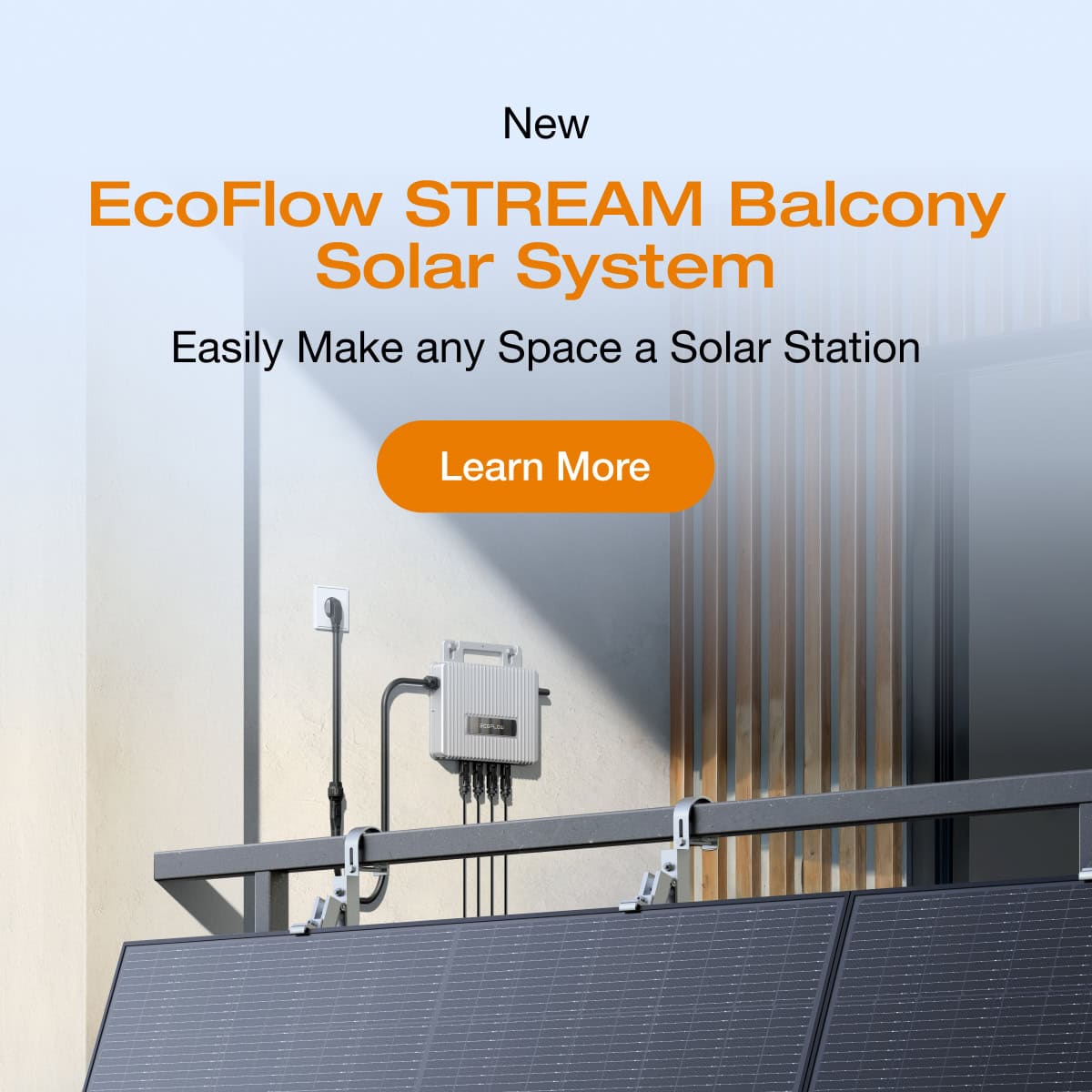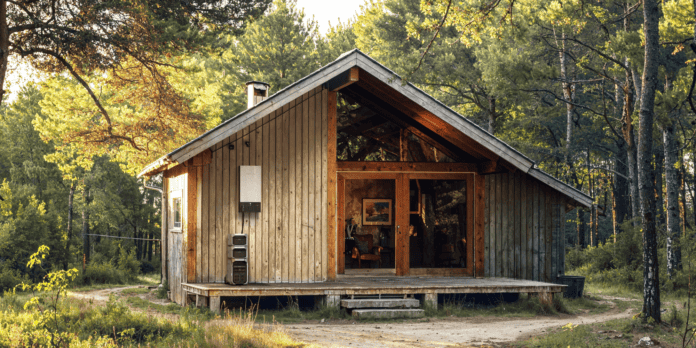Table of Contents
Powering your shed helps greatly enhance its functionality, whether you’re using it for hobbies, storage, or a workspace. However, deciding how to supply electricity to it involves considering various options and their associated costs and benefits. Understanding these choices will help you make an informed decision that suits your needs and keeps you safe.
Today, we’ll explore those options and how to do each one, as well as examine the advantages and disadvantages of each method. It will allow you to weigh practicality, sustainability, and safety to determine which works best for you.
Let’s dive in.
What Are the Options for Powering a Shed?
#1 Run Permanent Wiring
Running permanent wiring to your shed is permanent and safe when done correctly. However, it usually requires a permit, and you should never start the project without one. It could cost significant time and money with delays and possibly fines.
The next most important thing to consider is safety. Hiring a licensed electrician is always recommended since it involves working with live electricity; your permit may even require it. If you’re not confident in your abilities, the accidents, fires, or electrical hazards that could result are not worth the money you’d save.
A licensed electrician will know how to stay safe and comply with local codes and regulations.
If you want to do it yourself, here are some simple steps for a low-power setup: First, locate your breaker box and see if there is room for another breaker. If there is, continue with the next step. However, if the panel is at its maximum, which is mostly a problem with older homes, you may need another meter brought to your home, which requires professional installation.
Next, look at the path the wire will take from your breaker box to the shed. You will need to dig a trench to run the conduit that contains the wire underground. The depth of that trench may depend on whether you use metal or PVC conduit and Ground-Fault Circuit Interrupters (GFCI). However, the depth will generally be between 6 “and 18” deep.
Next, drill a hole in your shed wall so the wiring can go inside. To keep it simple, drill it at the height of your plug so the conduit goes through the wall into a plug on the other side where you can plug in lights and tools. If you need additional plugs, install a small secondary breaker box to supply more outlets.
Advantages
The primary advantage is that it is permanent, so there is no need to do anything afterwards other than plug it in. It should also be very safe to use if the work was done by a licensed electrician.
Disadvantages
The most significant disadvantage is the safety risk of doing it yourself and the need to understand the codes and how to meet them. Otherwise, there is the cost of hiring someone to do it for you, the cost associated with electrical permits, and the potential cost of needing an extra meter. There is also the need to dig a trench to bury the conduit underground.
#2 Use a Generator
Using a generator is much simpler than permanent wiring; you won’t need a permit or electrician. To determine the size of the generator to buy, first assess your power needs by adding up the watts of all the tools, lights, and other equipment you will run.
Set up is simple: Put the generator outside, add fuel, run a heavy-duty outdoor extension cord into your shed, and use it. While it is easy to do, it has significant disadvantages.
Advantages
The primary advantage of using a generator is that you can simply plug it in, run an extension cord, and use it.
Disadvantages
The downside is that you will constantly need to buy expensive fossil fuels to keep it running, creating not only extra expense but also time needed to refill it. Since they contain moving parts, they also need lubricants and maintenance and are prone to breakdowns. They also produce an enormous amount of noise, which could frustrate your household and your neighbours.
Another disadvantage is that they can never be brought indoors since non-renewable fossil fuels generate greenhouse gas emissions, lethal carbon monoxide, and other toxic gases. To use the power, you will have to run a heavy-duty outdoor extension cord from your generator inside your shed.
The generator should also be kept from the elements, which can damage it and shorten its lifespan, so you would also need to build a small outbuilding or cover to protect it.
#3 Install Solar Panels
Utilising a solar generator is a more sustainable power option. They last for at least 25 years, and you don’t need to hire an electrician. Since small solar setups are fairly simple, most homeowners do it themselves, and permits won’t usually be required unless you also plan to connect your system to the grid.
Solar generators utilise solar panels to create electricity via photovoltaic cells that convert electromagnetic radiation in the form of photons from the Sun into DC current. From there, a built-in inverter converts that DC current into the AC current that you need to run your lights and tools.
Purchasing a solar kit for your shed is by far the simplest way since you won’t have to design the system yourself; you just set up the components. Like a traditional generator, you must calculate your power needs to determine what size to get by adding the watts of all the tools, lights, and other equipment you would be running.
To set it up, panels are usually installed on the roof. Then, a wire runs into the shop and connects to the portable power station, which has a built-in battery, battery management system, inverter, and multiple output ports in standard wall plugs, USB, and USB-C to run a range of devices.
The EcoFlow DELTA 2 Max + 220W Solar Panel is perfect for most sheds. It produces 2kW of energy, which you can expand up to 6kWh with extra batteries. The 220W bifacial solar panel collects energy from both sides, allowing it to achieve an impressive 25% conversion efficiency, producing plenty of power for most purposes.
For those with greater energy needs, the EcoFlow DELTA Series Solar Generators come in a vast range of capacities to meet even the highest energy demands.
Advantages
One major advantage is that once you reach the solar payback period, when the electricity savings on your power bill pay for the cost of the equipment, your energy is free for at least 20 years. Since the fuel is sunlight and your portable power station has a battery storage system, you will always have free energy, day or night.
Since there are no moving parts, they are virtually maintenance-free, other than the occasional washing of the panels to remove debris and checking the connections to ensure they are secure.
Another advantage is that these produce very little sound, just above a whisper, so there is no need to worry about disturbing your family or neighbours. They also produce no toxic fumes, so you use and store can use them indoors, and there is no need for extension cords.
These systems can be just as safe to use as a professionally wired shed, but you get the benefit of using renewable energy rather than using often non-renewable grid energy.
Disadvantages
The primary disadvantage is the up-front costs of purchasing and setting up the system. The other disadvantage is for buildings in the permanent shade of trees. However, panels can be placed elsewhere, and a wire can run from the panels to the shed.
What Is the Easiest Way To Get Power to a Shed?
The easiest way to get power to a shed is solar power. You can install EcoFlow Solar Panels
on your roof. These are easy to set up and are relatively inexpensive. Your solar panels will connect to an EcoFlow Solar Generator that generates electricity from solar radiation from the Sun.
The solar generator has a battery storage system and a wide range of outlet plugs and comes in a wide range of capacities to suit your needs. Solar generators can cover all your power needs, whether yours is just a hobby shed with minimal power needs or a large work-at-home operation.
Frequently Asked Questions
Yes, you can run an extension cord from an outdoor socket to your shed. However, it is not a viable long-term solution and should never be used for high-energy needs like running multiple power tools at a time, as that can present a serious safety risk.
It depends on your local permit requirements. Sometimes, a homeowner is allowed to run electricity in their shed, but in other cases, a licensed electrician is required. Hiring a licensed electrician is always recommended because they know the safety and local code requirements.
Final Thoughts
Running permanent wiring is a reliable, long-term solution for supplying electricity to your shed, but it requires permits and safety precautions. Traditional generators provide immediate power but have disadvantages, including high maintenance, high operating costs, and environmental and health concerns.
Solar panels represent a sustainable and low-maintenance choice, especially when equipped with efficient systems like the EcoFlow Solar Panels. As you examine your options, consider not only your immediate needs but also your choices’ long-term costs, benefits, and environmental impacts.







